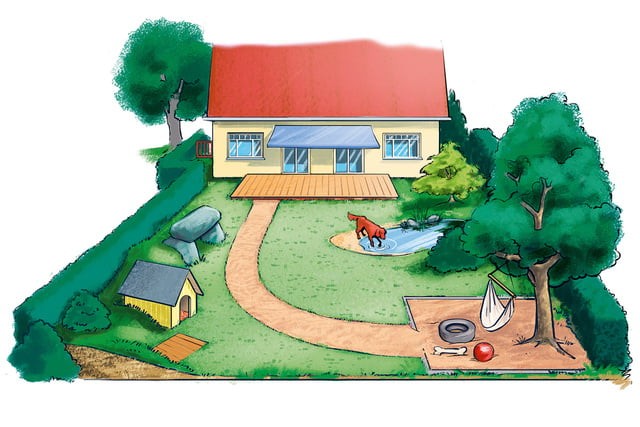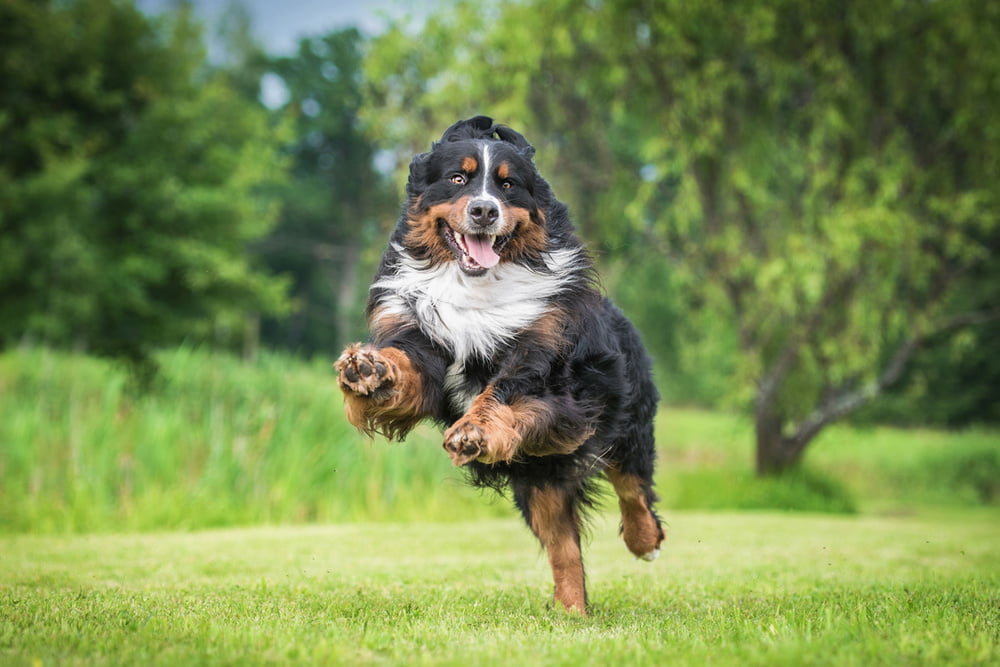According to statistics, every fourth garden owner has a dog. We show how to create a dog-friendly garden.
Problems between dogs and humans in the garden can be avoided by clever garden planning. If you want to avoid conflicts with your four-legged friend from the outset, you must first understand what the animal’s needs are: Dogs like to be close to their humans, to play and romp. Some breeds also have predispositions to hunt, herd or guard.
Contents
Dogs in the garden: drawing boundaries
If there are areas in the garden that are off-limits to the dog – flower or vegetable beds, for example – you should make that clear to your dog from the start: Peaceful coexistence starts with dividing the garden into areas that are available to the dog and those that are not meant for him. Here you have to pronounce prohibitions right at the beginning of the dog training.
It is also helpful if you set clear visual boundaries in the garden. This can be, for example, small fences at the edge of beds, but also lawn edges bordered with stones.
In addition, areas with different surfaces are a good learning aid for dogs. The goal is to help the dog with easy to understand markings.
This will also make it easier for you to assign areas to your dog that belong to him and where he can run around.
Family connection for the dog in the garden
As a typical pack animal, the dog is very social, it seeks connection with the family. Therefore, create a space in your garden that belongs to you and your dog together: a secluded island for playing and being together.
Retreat possibilities for the dog
A dog also needs retreat possibilities in the garden. You create these for him in the following way:
Offer your dog one or more “hiding places”. These should be about as large as the dog, so that a human is not a competitor already for reasons of space.
It is important that such a place is not too remote, so that the dog can always see what his “pack” is doing.
A doghouse also provides a good retreat.
Dog friendly garden
Overall, a dog-friendly garden basically includes the following items:
Den: This place belongs to the dog alone. Often, the very presence of a “den” calms nervous dogs.
Watering hole: Your dog should always have fresh water available. Whether the garden pond also serves the dog for bathing, you decide.
Common playground: Create a place where you can spend time with your dog. Here, of course, the dog is allowed to romp.
Keep watch: A dog likes to observe what is going on in the garden. He needs a place from which he can overlook most of the garden.
Home: A doghouse can serve as a hiding place, but it should not be the dog’s “living area.” Dogs need to be connected to the family, and in addition, great heat or cold can be dangerous for dogs, as can persistent dampness.

Dog in the garden: These plants are poisonous
The creation of a small dog paradise includes, not least, avoiding plants that can be dangerous to dogs.
Therefore, refrain from poisonous plants such as:
- Azalea
- Box
- Oleander
- Yew
- Laburnum
- Laurel
- Lupine
- daffodil
- Delphinium
So create a beautiful garden for you and your dog, where they can play together and also relax.


